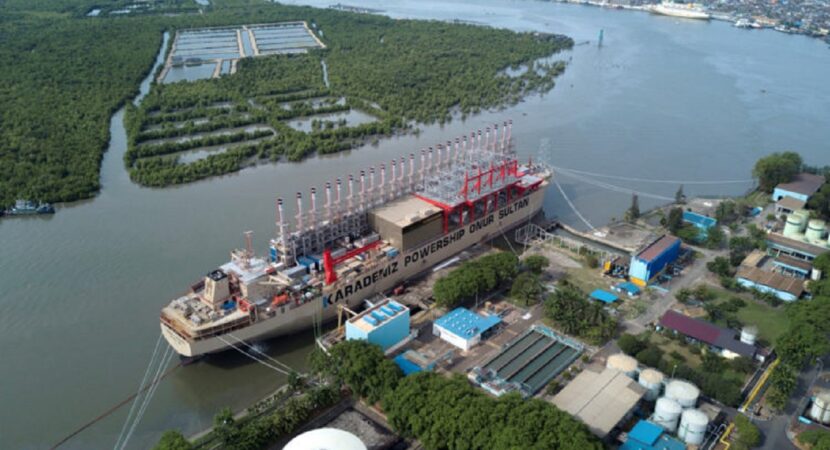
The first floating thermoelectric plant arrives in Brazil and over the next few weeks, four more units will arrive in the country and together they will be able to generate 560 MW of electricity.
The first floating thermoelectric plant scheduled to operate in Brazil arrived in the country this Tuesday (17). The thermoelectric plant, which is also a ship, is currently anchored in the Port of Angra dos Reis, on Costa Verde, but officially it is in customs waters, awaiting an environmental license to actually enter the country. In the coming weeks, it is estimated that other similar plants will arrive in Brazil. In total, the four units will be capable of generating 560 megawatts, which is enough to supply around 2 million people.
Floating thermoelectric plants will be located in Sepetiba Bay
Karpowership, the Turkish company responsible for the plants, was one of the winners of the emergency auction held at the end of last year, precisely during the water scarcity, which brought back one of the worst rationing in history.
According to Gilberto Bueno, director of projects at the company, the contract for the floating thermoelectric power plant has a term set at three and a half years so that the energy reserve during this period is guaranteed. The executive claims that some unforeseen events occurred in the transmission line of some plant, the floating thermoelectric plant can be summoned to operate instantly and in a matter of minutes the energy will be all on the grid, offering energy security in Brazil.
According to the project, the thermoelectric plants will be anchored in Sepetiba Bay, 3 km from the coast, next to the unit that supplies the other vessels with gas. All units will be connected to the transmission line, which is about 15 km long: three on water and the remaining twelve on land, which cut through the industrial district of Santa Cruz, located in the West Zone of the Fluminense capital, until they reach the Furnas substation, where electricity enters the National Interconnected System (SIN).
MPF questions environmental licensing of floating plants
Despite everything, the project became the target of an action by the Federal Public Ministry, which is questioning the environmental licensing made by Inea, which is the competent state agency. According to the MPF, there are flaws in the process, despite the fact that the floating thermoelectric plant is the first in the country.
As there is no assembly or construction, given that the thermoelectric plant is already ready, there was no prior licensing of the floating plants. However, the company claims that there are several studies being carried out to assess the changes in the environment when the plants start operating.
It is worth mentioning that the transmission line, which has 36 towers, estimates the cutting of vegetation of at least one hectare, which is equivalent to a football field. The Turkish company is committed to carrying out environmental offsets. According to Inea, the licensing request for the start of operation of the floating plants is still under analysis.
Offshore projects are gaining prominence in Brazil
A Samsung Heavy Industries it is also developing the first floating nuclear power plant off the coast of Korea and will have the Danish Seaborg contribute to the development of the project.
So far, Samsung has signed a memorandum of understanding with Seaborg, a company that specializes in the development of compact molten salt reactors (CSMRs). Compact reactors can generate energy very efficiently, without emitting polluting gases such as CO2.
These reactors are much smaller compared to common nuclear power plants and can be used in any type of project that requires a relatively small amount of energy compared to the scale of conventional nuclear power plants.












